10 Flowering Vines That Grow In Shade – Climbers You Can Start Growing in Shade
Imagine the leaves that frame your view, the blossoms that bloom right at your eye level, all the while you seek shade from the Sun in that beautiful garden sipping’ tea! This can be your reality! In this article, we will talk about flowering vines that grow in the shade.
In nature, some vines grow across tree trunks, particularly in tropical forests. This has resulted in an abundance of garden varieties and cultivars that you may prosper in that low-light part of your garden. They’re also great for unwinding away from the summer heat.
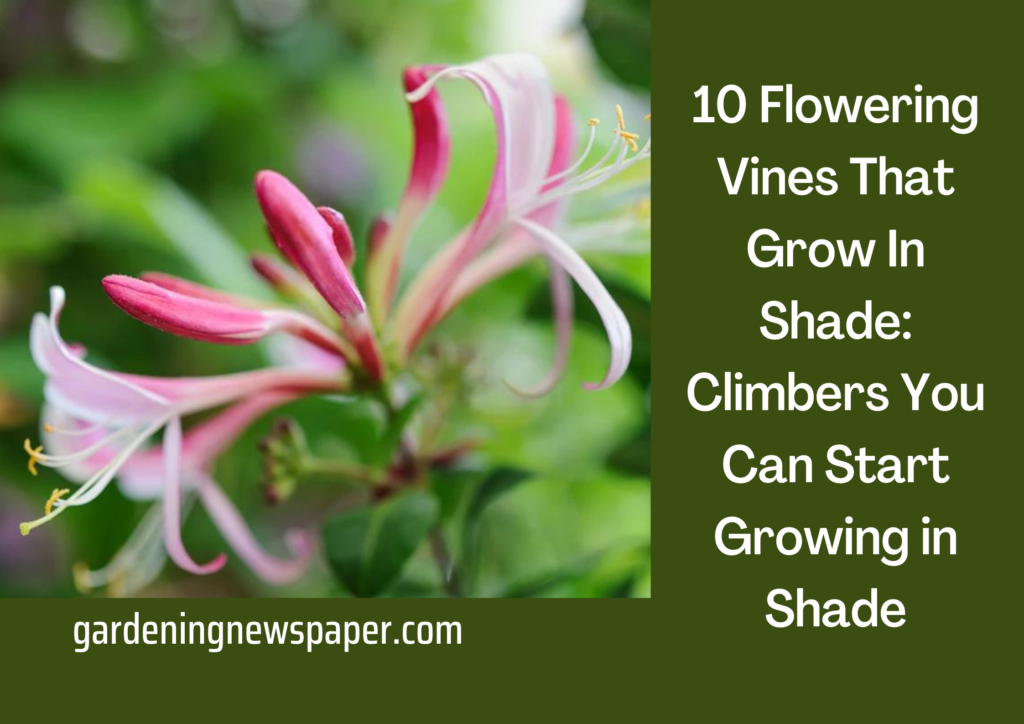
Shade flowering vines are lovely additions to gardens, unattractive fences, or anything else in your yard that you want to hide. You could even benefit from these flowers because some of them produce food. Growing blossoming vines in your yard will attract butterflies, as well as hummingbirds and other species.
How to choose flowering vines that grow in the shade?
When choosing a blooming vine to plant in your yard, it is vital to understand how quickly and how large it will grow. Some of the vines here may extend to five times the height of a human. There is great news here- that many vines respond favorably to trimming, allowing you to keep them in check. Let’s have a peek at some of our favorites!
- Vine plants aren’t very self-sufficient. As a result, they “cling” to other plants and strong structures.
- They can accomplish this by wrapping their stems around the support or by using tendrils, which are “twisting branchlets.”
- Wisteria is the most popular twisting flowered vine in the world. Tendrils, on the other hand, are used by grapes…
- Grapes cannot be grown in partial shade soil or complete darkness since they demand a lot of sun exposure full of light!
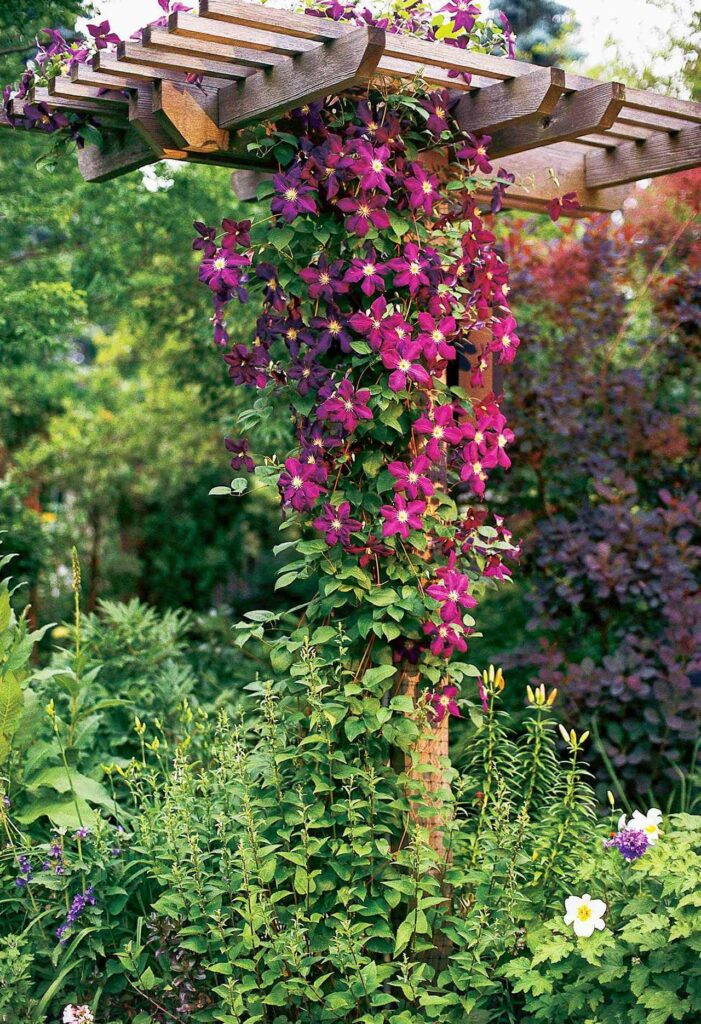
Several vines, however, may flourish in partial or complete shade. However, to understand where to grow flowering vines in the shade, you need to know:
- Complete darkness does not even indicate “complete shade,” just as full Sun does not imply “always in the Sun”! The presence of a complete shadow suggests that the place receives fewer than three hours of direct sunshine every day.
- Similarly, partial shade indicates that the region receives 3 to 6 hours of direct sunshine on average every day. The vast majority of “shady spots” are just slightly shaded.
Vines to grow in a shade:
Vinca Minor
Periwinkle may be invasive in some circumstances, although it is very easy to manage in the landscape and produces gorgeous violet-blue flowers. It has the potential to be a wonderful vine for growing under trees.
Vinca is a drought-tolerant ground cover, allowing it to grow massive trees that take nearly all of the available water. Periwinkle is not a very big climber, unlike the other plants on this list. Many will appreciate its capacity to fill in an area that might otherwise be a resting home for weeds.
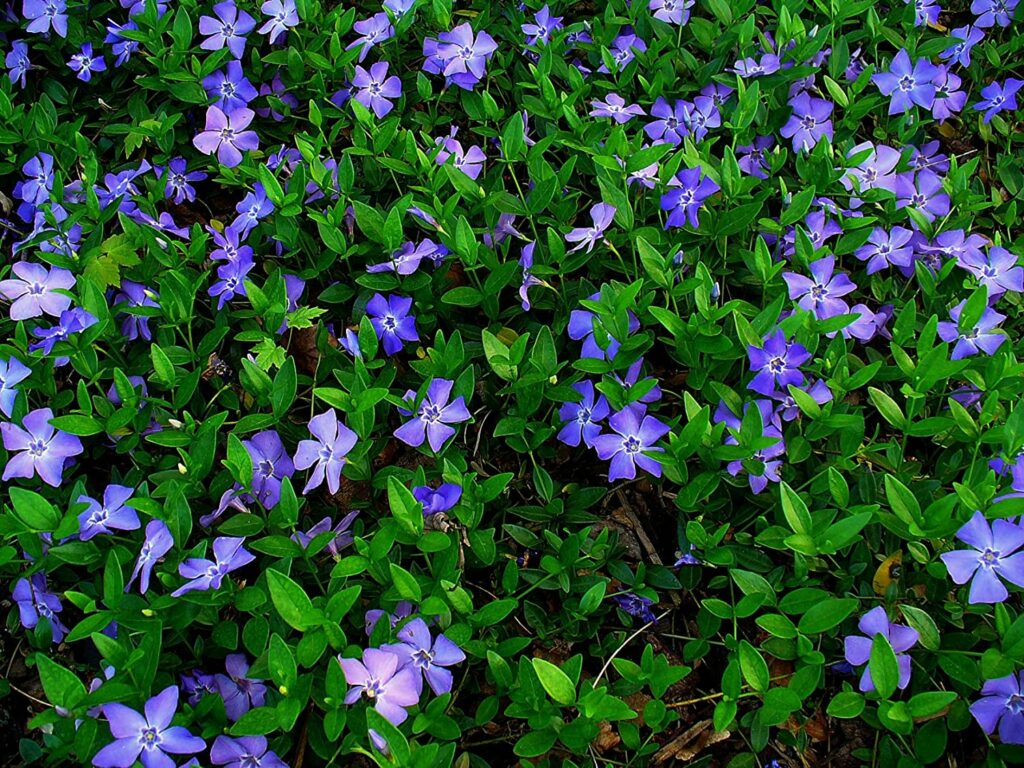
Honeysuckle
The best Honeysuckle to grow in the shadow is Lonicera periclymenum. Among the notable European cultivars are L. ‘Graham Thomas’ and L. ‘Serotina.’
L. Cilicia, a native of western North America, blooms with orange trumpets in April.
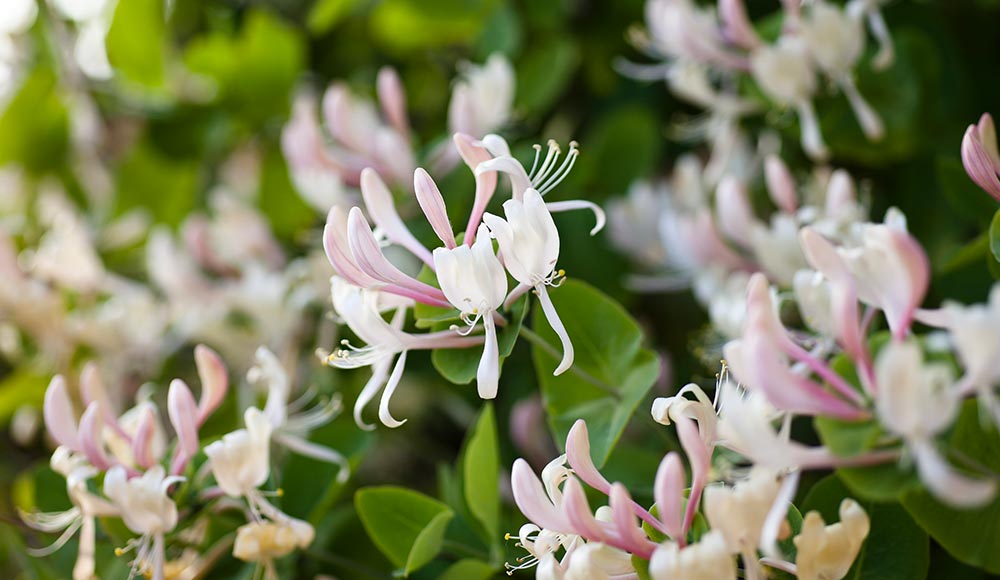
Climbing Hydrangea
Climbing Hydrangea blooms profusely in the spring and summer with characteristic white flowers.
These massive mostly evergreen plants take several years to develop, but once established, they become a valued legacy art piece in your setting zone.
Provide appropriate soil amendments, as well as solid supports, for this long-lived climber’s deep, damp, rich, and well-draining growing requirements.

Butterfly Pea
The Butterfly Pea is a vine that grows on the ground and has twining vines. As a result, it’s an excellent ground cover for a blossoming vine. It has a gorgeous deep purple flower with a white center—butterfly peas-like moist, pH-neutral soil. Six to ten seeds mature in their flat pods and, if collected early, can be eaten. In Southeast Asia, this flower is often utilized as a food coloring.
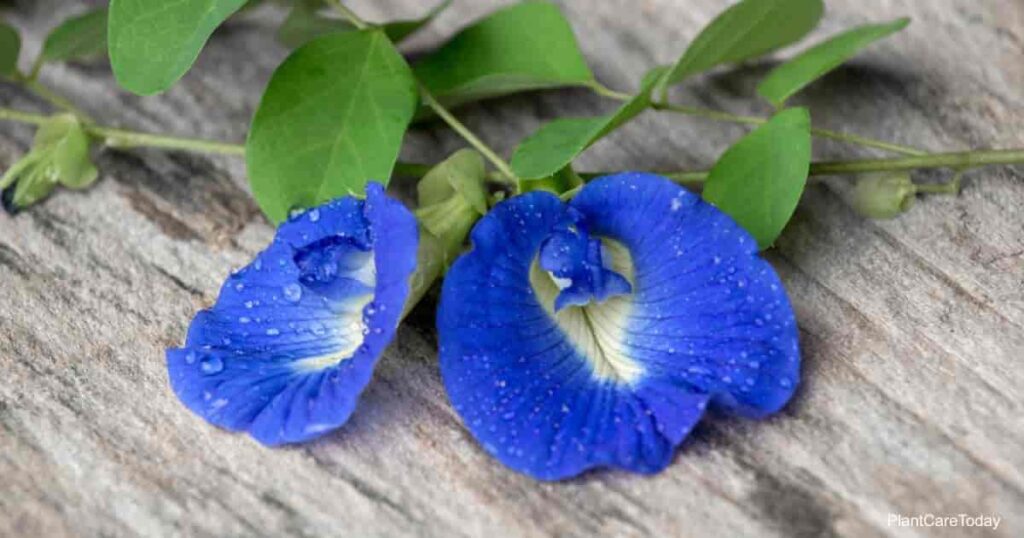
Carolina jasmine
The Carolina Jasmine grows in the Carolinas region of the United States. This jasmine thrives in subtropical and tropical conditions, and with the proper climbing support, it may reach remarkable heights.
Carolina Jasmine is distinguished by its trumpet-shaped vivid yellow flowers. These flowers form clusters and may be orange on the inside. You can’t help but notice how fragrant Carolina Jasmine flowers are as you walk past. As a result, insect pollinators are likely to sit on them.
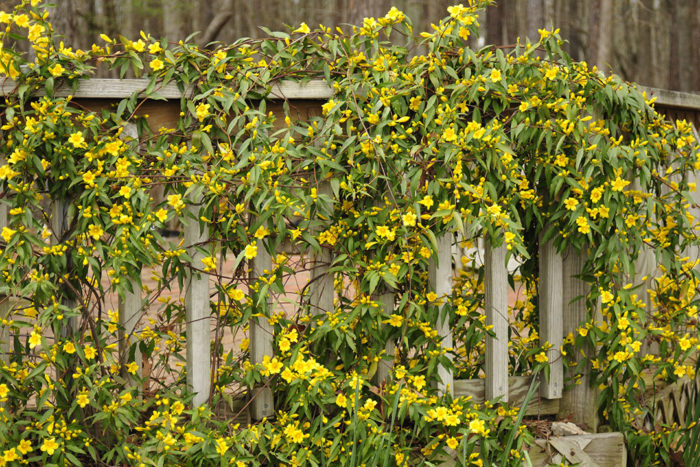
Chinese Wisteria
Wisteria frutescens, an American native, is a better choice for most gardens for shade vines. The American variety has the drawback of not blooming in the shade. In contrast, Chinese wisteria flowers grow well in the shade, but gardeners sometimes struggle with their invasive nature. They have long and beautiful climbing vines.
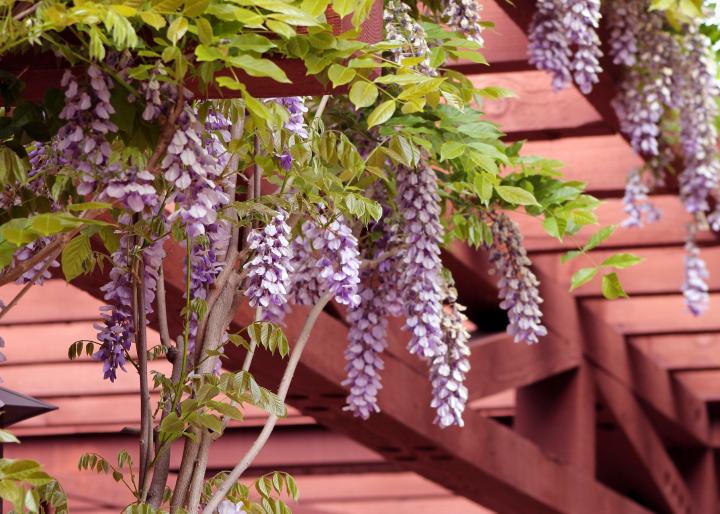
Virginia Creeper
Virginia Creeper drops its leaves in the winter, exposing the complex arteries of branch works that run throughout its host building.
The most fabulous fall color stays on leaves that receive full sun exposure, but thick layered growth in shady regions is spectacular. Virginia Creeper is okay with pruning, and most soil types, reach a mature height of 30 to 50 feet.

Chocolate Vine
The Chocolate Vine has rich reddish-pink flowers that smell like chocolate. Some parts of this plant are consumable. The chocolate vine is a shade-loving vine that grows well on mountain slopes, hedges, and trees. It thrives sandy soil and needs a lot of water as well as appropriate drainage. In the past, people made baskets out of Chocolate Vines.
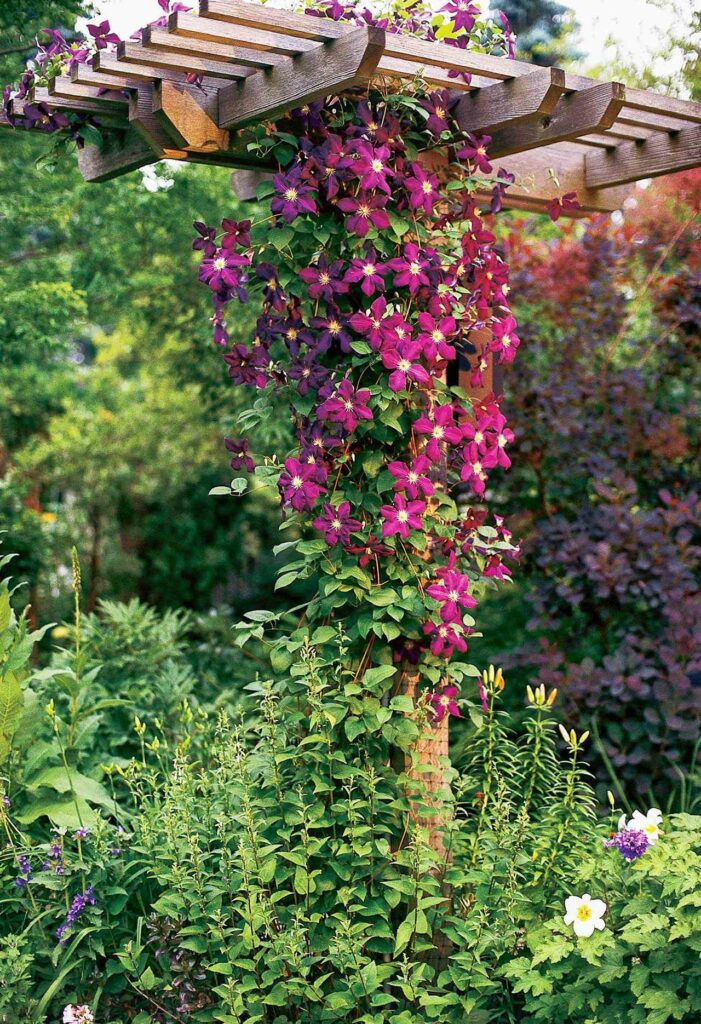
English Ivy
Because of its invasiveness, some gardeners consider English ivy to be one of the most dreaded vines in North America. Despite the fact that it grows well in the shady areas, growing this vine isn’t a cup of tea for many; however, with its uniqueness and ability to grow massive, one cannot help but love this beauty.

Boston Ivy League
Boston Ivy, famed for its gorgeous leaves, eventually clings to structures, creating amazing flowery waves. Most of the flowers in the spring transform into bird-feeding berries in the autumn. In suitable warm areas, Boston Ivy may grow to be 30 to 50 feet long, giving the impression of a well-earned institution.
Boston ivy thrives in the shade and has a range of leaf colors. The colors of autumn will be most vibrant on branches that reach sunny locations.
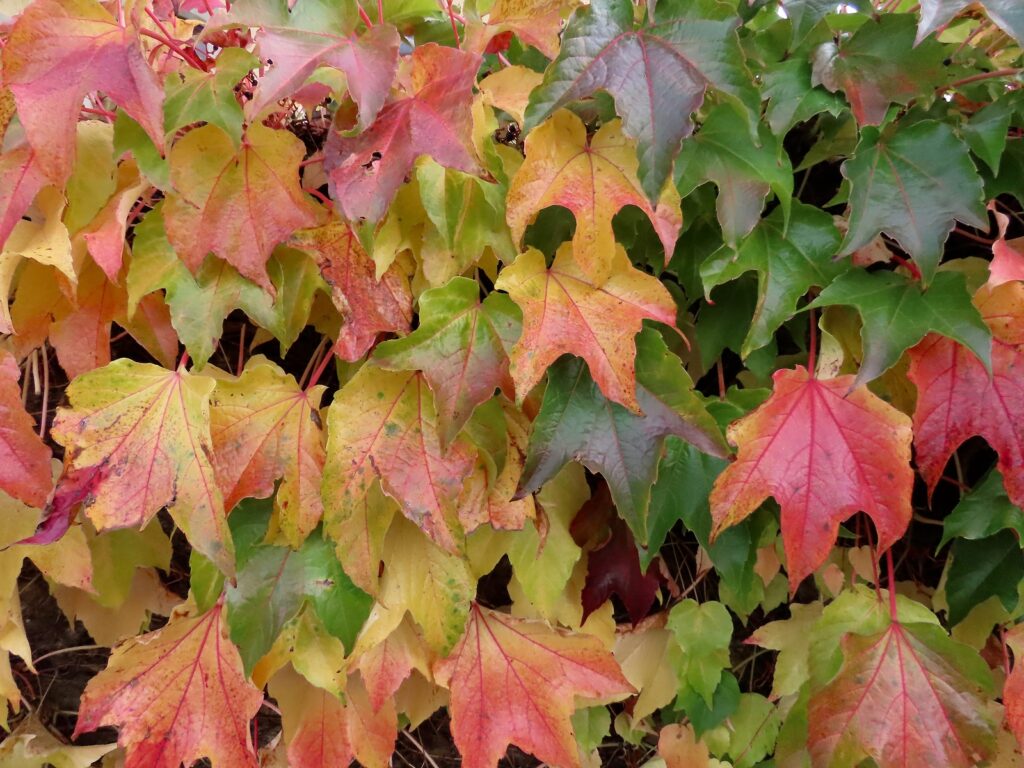
Each blossoming vine has a different look when growing in the shade, but they all bring an elegant and royal look.
You can use the vines to soften the appearance of a short fence or trellis or just run across the supporter as a symbol of constantly moving. So, what are you waiting for? Plant these beauties today.
How to plant climbers in garden?
Growing climbers in the garden can be a great way to add height and interest to your outdoor space. Here are some steps to follow:
- Choose the right plant: Select a climbing plant that is suited to the growing conditions in your garden.
- Consider factors such as sunlight, soil type, and climate.
- Provide support: Climbing plants need something to climb on, such as a trellis, fence, or wall. Make sure the support is sturdy enough to hold the weight of the plant as it grows.
- Prepare the soil: Prepare the soil by removing weeds and adding organic matter, such as compost, to improve soil fertility and drainage.
- Plant the climbers: Dig a hole that is slightly larger than the plant’s root ball and set the plant in the hole.
- Fill the hole with soil and water thoroughly.
- Train the plant: As the plant grows, gently guide it to climb up the support structure. Tie it to the structure using garden twine or wire.
- Water and fertilize: Water the plant regularly, especially during hot, dry weather. Fertilize the plant with a balanced fertilizer once a month during the growing season.
- Prune: Prune the plant regularly to keep it in shape and prevent it from becoming too invasive. Remove any dead or damaged branches, and trim back any excessive growth.
By following these steps, you can successfully grow climbers in your garden and enjoy their beauty and height.
Care tips for growing flowering vine:
Flowering vines can be a beautiful addition to any garden or landscape. Here are some care tips for flowering vines:
- Sunlight: Most flowering vines prefer full sunlight, but some may also do well in partial shade. Make sure to choose a location that suits the plant’s sunlight requirements.
- Watering: Water the plant regularly, especially during dry weather, to keep the soil moist but not waterlogged. Avoid watering the foliage, as this can increase the risk of fungal diseases.
- Fertilizing: Flowering vines benefit from regular fertilization to encourage healthy growth and blooming. Use a balanced fertilizer once a month during the growing season.
- Pruning: Prune the plant regularly to remove dead or damaged branches and to control its growth. Some flowering vines, such as clematis, should be pruned in a specific way to promote blooming.
- Support: Provide a sturdy support structure, such as a trellis, arbor, or fence, for the vine to climb on. Make sure the support is securely anchored to the ground and can support the weight of the plant as it grows.
- Pest and disease control: Keep an eye out for common pests and diseases, such as spider mites and powdery mildew, and take appropriate measures to control them. This may include using organic or chemical controls, depending on your preference.
By following these care tips, you can help your flowering vines thrive and produce beautiful blooms for you to enjoy.
